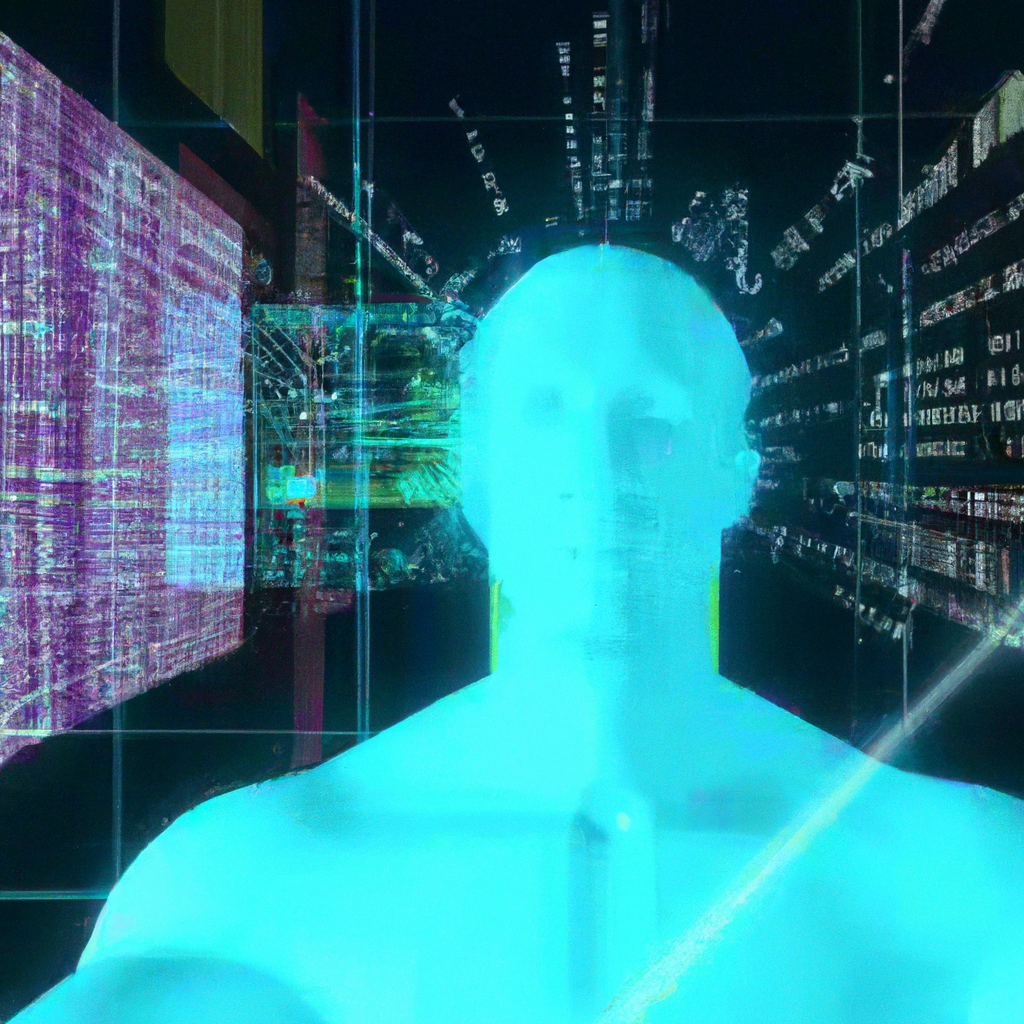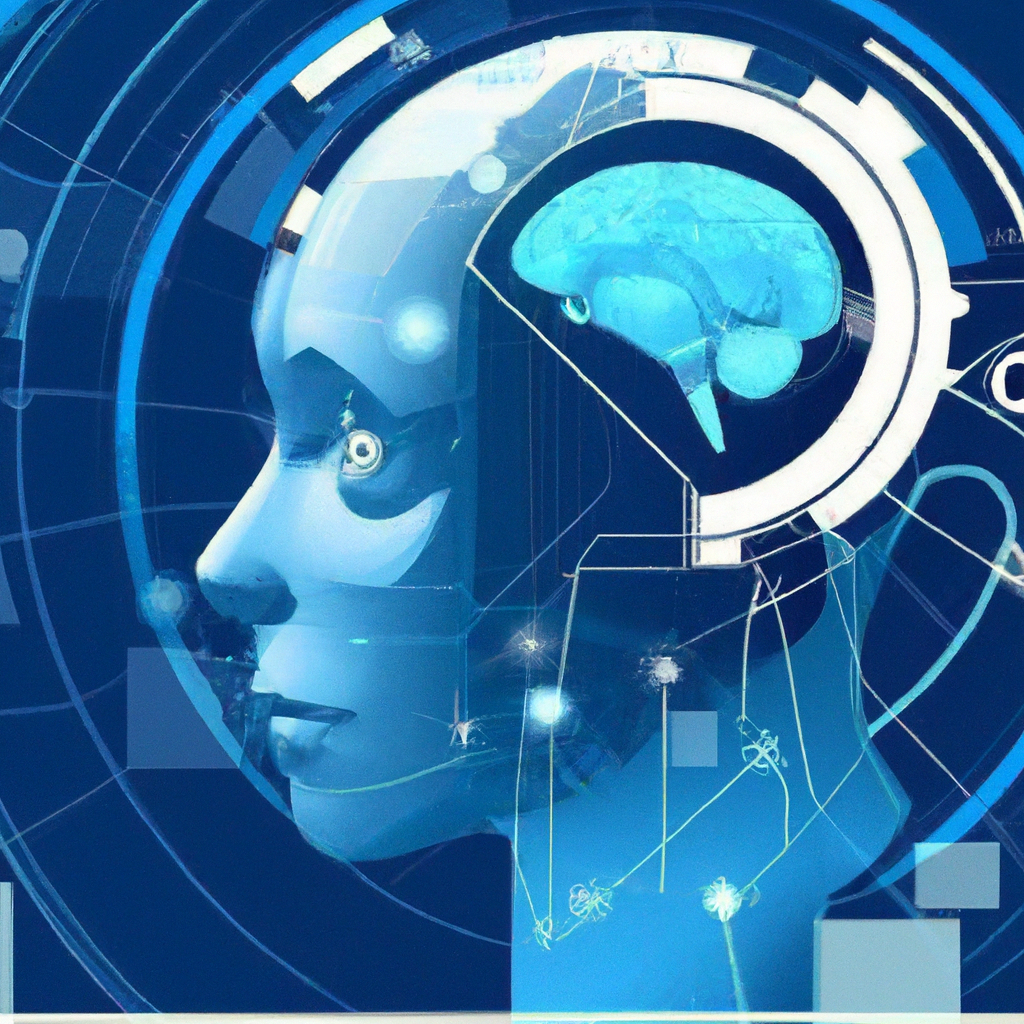Have you ever wondered what exactly is meant by “reinforcement learning” in the world of artificial intelligence (AI)? In a nutshell, reinforcement learning is a branch of AI that involves training an algorithm to make decisions based on trial and error, similar to how humans learn through experiences. It is a fascinating concept that enables machines to learn and improve their performance over time by receiving positive reinforcement for making correct decisions and negative reinforcement for making incorrect ones. Join us as we embark on a journey to explore the depths of reinforcement learning and its applications in the field of AI.

This image is property of images.unsplash.com.
Introduction to Reinforcement Learning
Reinforcement Learning (RL) is a branch of Artificial Intelligence (AI) that focuses on training an agent to make decisions based on trial and error in order to maximize rewards. In RL, the agent interacts with its environment and learns from the feedback it receives, allowing it to develop its own strategy for achieving a specific goal. This differs from other machine learning techniques where the agent is provided with labeled data to learn from. RL is particularly useful in situations where the optimal solution cannot be easily determined or explicitly provided.
Defining Reinforcement Learning
Reinforcement Learning can be defined as a type of machine learning where an agent learns by taking actions in an environment to maximize cumulative rewards. The agent learns through a process of trial and error, receiving feedback from the environment in the form of rewards or penalties for its actions. The goal of the agent is to learn an optimal policy that maximizes its cumulative long-term reward.
Components of Reinforcement Learning
Reinforcement Learning consists of three main components: the agent, the environment, and the policy. The agent is the entity that interacts with the environment and takes actions based on its observations. The environment is the external system in which the agent operates and from which it receives feedback. The policy is the strategy or set of rules that the agent follows to determine its actions based on its observations.
Key Terminology
When discussing reinforcement learning, there are several key terms that are important to understand. First, the state refers to the current configuration or observation of the environment. The action is the specific decision made by the agent in response to the state. The reward is the feedback the agent receives from the environment after taking an action, indicating the desirability of that action. The return is the cumulative sum of rewards obtained over a sequence of actions. The policy is the mapping from states to actions that the agent uses to make decisions.
Basic Concepts in Reinforcement Learning
Agent and Environment
In RL, the agent is the entity that interacts with the environment. It receives observations or states from the environment, takes actions, and receives rewards or penalties as feedback. The agent’s objective is to learn the optimal policy that maximizes its long-term rewards. The environment, on the other hand, is the system in which the agent operates. It can be a physical system, a simulation, or any other entity that the agent interacts with.
State and Action
The state refers to the current configuration or observation of the environment. It represents the information that the agent uses to make decisions. Actions, on the other hand, are the specific decisions made by the agent in response to the state. The actions can have various forms depending on the environment, ranging from simple movement to complex decision-making processes.
Reward and Return
In RL, the agent receives feedback from the environment in the form of rewards or penalties. Rewards indicate the desirability of the agent’s actions, while penalties indicate undesirability. The agent’s objective is to maximize its cumulative rewards over time. The return, on the other hand, is the cumulative sum of rewards obtained over a sequence of actions. It represents the measure of the agent’s performance and the objective to be maximized.
Policy
The policy is the mapping from states to actions that the agent uses to make decisions. It represents the strategy or set of rules that the agent follows to determine its actions based on its observations. The policy can be deterministic, where each state is associated with a single action, or stochastic, where each state is associated with a probability distribution over actions. The goal of the agent is to learn the optimal policy that maximizes its long-term rewards.
The Reinforcement Learning Process
Agent-Environment Interaction
The process of reinforcement learning involves the interaction between the agent and the environment. The agent receives observations or states from the environment, takes actions, and receives rewards or penalties as feedback. This interaction forms the basis for the agent’s learning process, as it learns from the consequences of its actions.
Observation and State
Observation refers to the information that the agent receives from the environment. It can be a raw sensory input or a processed representation of the current state. The state, on the other hand, represents the current configuration or observation of the environment. It includes all the relevant information that the agent needs to make decisions.
Action and Policy
Action refers to the specific decision made by the agent in response to the state. The action can be a physical movement, a choice from a set of options, or any other decision made by the agent. The policy, as mentioned earlier, is the mapping from states to actions that the agent uses to make decisions. The agent’s objective is to learn the optimal policy that maximizes its long-term rewards.
Reward and Learning
The agent receives feedback from the environment in the form of rewards or penalties. Rewards indicate the desirability of the agent’s actions, while penalties indicate undesirability. The agent’s objective is to maximize its cumulative rewards over time. Through trial and error, the agent learns which actions lead to higher rewards and adjusts its policy accordingly.
Exploration and Exploitation
Balancing Exploration and Exploitation
In RL, there is a trade-off between exploration and exploitation. Exploration refers to the process of trying out different actions to gather information about the environment and identify the most rewarding actions. Exploitation, on the other hand, refers to the process of taking the actions that are known to be rewarding based on previous experiences. Balancing exploration and exploitation is crucial in order to achieve the optimal policy.
Epsilon-Greedy Strategy
One common strategy for balancing exploration and exploitation is the epsilon-greedy strategy. This strategy selects the greedy action (i.e., the action with the highest expected reward) most of the time, but with a small probability epsilon, it selects a random action to explore other possibilities. This allows the agent to exploit its current knowledge while still exploring new actions.
Multi-Armed Bandit Problem
The multi-armed bandit problem is a classic exploration-exploitation dilemma in RL. It involves a set of slot machines, each with an unknown reward distribution. The agent’s goal is to maximize its cumulative rewards by deciding which machine to play repeatedly. The agent faces the trade-off of trying out different machines to gather information (exploration) and playing the machine that has provided the highest rewards so far (exploitation).

This image is property of images.unsplash.com.
Types of Reinforcement Learning Algorithms
Model-Based RL
Model-based RL algorithms focus on learning a model of the environment, which includes the transition dynamics and the reward function. These algorithms use the learned model to plan and make decisions. By having a model of the environment, the agent can simulate different actions and predict the future states and rewards, which allows for more informed decision-making.
Model-Free RL
Model-free RL algorithms, on the other hand, do not learn an explicit model of the environment. Instead, they directly learn a policy or value function based on interactions with the environment. Model-free algorithms are more flexible and can be applied to a wider range of problems, but they typically require more training data compared to model-based algorithms.
Value-Based Methods
Value-based methods focus on learning the value of states or state-action pairs. The value represents the expected cumulative reward that can be obtained by following a certain policy. Value-based methods typically use iterative algorithms, such as the Q-Learning algorithm, to update the value function based on observed rewards and states.
Policy-Based Methods
Policy-based methods directly learn the policy, which is the mapping from states to actions. These methods aim to find the policy that maximizes the expected cumulative reward. Policy-based methods often use stochastic policies that provide a probability distribution over actions for a given state, allowing for more flexibility in decision-making.
Actor-Critic Methods
Actor-critic methods combine value-based and policy-based approaches. They employ two separate components: the actor, which learns the policy based on observed rewards and states, and the critic, which learns the value function to evaluate the performance of the actor. The critic provides feedback to the actor, helping it to improve its policy.
Q-Learning Algorithm
Definition and Overview
Q-Learning is a popular model-free reinforcement learning algorithm. It learns an action-value function, known as the Q-function, that represents the expected cumulative reward for taking a particular action in a given state. The Q-Learning algorithm uses an iterative process to update the Q-values based on observed rewards and states, allowing the agent to learn the optimal policy that maximizes its long-term rewards.
Q-Value Iteration
Q-Learning uses a technique called Q-value iteration to update the Q-values. In each iteration, the algorithm updates the Q-value for a state-action pair based on the observed reward and the maximum Q-value of the next state. This update is performed iteratively until the Q-values converge to an optimal policy.
Exploration vs. Exploitation
In Q-Learning, as in other RL algorithms, there is a trade-off between exploration and exploitation. The agent needs to explore different actions to gather information about the environment and identify the most rewarding actions. At the same time, it needs to exploit its current knowledge to maximize its rewards. Q-Learning uses an epsilon-greedy strategy to balance exploration and exploitation.
Applying Q-Learning
Q-Learning can be applied to a wide range of problems. It has been successfully used in various domains, including game playing, robotics, and optimization problems. The algorithm requires defining the state and action space, as well as the reward and transition dynamics of the environment. By iteratively updating the Q-values based on observed rewards and states, the agent can learn the optimal policy to maximize its long-term rewards.

This image is property of images.unsplash.com.
Deep Reinforcement Learning
The Combination of RL and Deep Learning
Deep Reinforcement Learning is the integration of RL with Deep Learning techniques. It involves using deep neural networks to represent the Q-function or policy instead of traditional tabular representations. Deep RL has gained significant attention in recent years due to its ability to handle high-dimensional and complex environments.
Deep Q-Networks (DQN)
Deep Q-Networks (DQNs) are a type of deep neural network used in Deep RL. DQNs are used to estimate the Q-values of different state-action pairs. They take the current state as input and output the Q-values for all possible actions. DQNs leverage the power of deep learning to handle large-scale and high-dimensional state spaces.
Experience Replay
Experience replay is a technique used in Deep RL to improve the learning process. It involves storing the agent’s experiences, such as state, action, reward, and next state, in a replay buffer. During the training process, the agent samples experiences from the replay buffer to update the network weights. Experience replay helps to break the correlation between sequential experiences, leading to better learning performance.
Advantages and Challenges
Deep Reinforcement Learning offers several advantages, such as the ability to handle complex and high-dimensional environments and the potential for automatic feature extraction. However, it also presents challenges, including the need for large amounts of training data, the instability of training deep networks, and the difficulty in tuning hyperparameters. Nonetheless, with the advancements in deep learning, Deep RL has shown promising results in various applications.
Applications of Reinforcement Learning
Game Playing
Reinforcement Learning has been widely applied to game playing. It has been used to train agents that can play games such as chess, Go, and video games. RL algorithms have shown impressive performance, often surpassing human capabilities, in these game-playing domains. Game playing provides a rich testbed for RL algorithms due to the well-defined rules and clearly defined objectives.
Robotics
Reinforcement Learning has also found applications in robotics. RL algorithms have been used to train robots to perform complex tasks, such as locomotion, manipulation, and navigation. RL enables robots to learn from interactions with the environment, allowing them to adapt and improve their performance over time. Robotics provides a challenging and dynamic environment where RL algorithms can be applied to achieve autonomous and intelligent behavior.
Optimization Problems
Reinforcement Learning has been successfully applied to various optimization problems. RL algorithms have been used to solve problems such as resource allocation, scheduling, and route optimization. RL provides a powerful framework for solving these problems by learning the optimal policy that maximizes a specific objective, such as minimizing cost or maximizing efficiency. By learning from experience, RL algorithms can find optimal solutions in complex and dynamic optimization landscapes.
Autonomous Driving
Reinforcement Learning has gained attention in the field of autonomous driving. RL algorithms have been used to train autonomous vehicles to navigate complex traffic scenarios and make intelligent decisions. RL enables vehicles to learn from real-world interactions, allowing them to adapt to different driving conditions and improve their driving performance. Autonomous driving presents a challenging and safety-critical domain where RL algorithms can be applied to enhance the safety and efficiency of transportation systems.

Recent Advancements and Future Directions
Advancements in Reinforcement Learning
Reinforcement Learning has witnessed significant advancements in recent years. A key advancement is the combination of RL with Deep Learning techniques, leading to the emergence of Deep Reinforcement Learning. This integration has allowed RL algorithms to handle high-dimensional and complex environments and achieve state-of-the-art performance in various domains. Additionally, the availability of open-source RL libraries, such as OpenAI Gym, has made RL more accessible to researchers and practitioners.
OpenAI Gym and RL Libraries
OpenAI Gym is a popular open-source RL library that provides a wide range of environments for testing and benchmarking RL algorithms. It offers a standardized interface and evaluation metrics, allowing researchers to compare and reproduce results across different algorithms and domains. OpenAI Gym has played a crucial role in promoting the development and evaluation of RL algorithms.
Challenges and Research Areas
Despite the advancements in RL, there are still several challenges and research areas that require further investigation. One important challenge is the sample efficiency of RL algorithms, as they often require a large amount of training data to achieve good performance. Another challenge is the transferability of learned policies across different environments, as RL algorithms often struggle to generalize their knowledge to unseen scenarios. Other research areas include multi-agent RL, hierarchical RL, and meta-learning, which aim to tackle more complex and real-world problems.
Potential Future Developments
In the future, we can expect to see further advancements in Reinforcement Learning. One direction is the development of more sample-efficient algorithms that can learn from fewer interactions with the environment. This can involve the use of transfer learning, offline learning, and other techniques to leverage prior knowledge and improve learning efficiency. Another direction is the integration of RL with other AI techniques, such as imitation learning, unsupervised learning, and meta-learning, to enhance the capabilities of RL agents and enable them to tackle more complex and diverse tasks.
Conclusion
Reinforcement Learning is a powerful branch of Artificial Intelligence that focuses on training agents through trial and error to maximize cumulative rewards. It involves the interaction between the agent and the environment, where the agent learns from the consequences of its actions. RL has a wide range of applications, from game playing to robotics and optimization problems. Recent advancements in Deep Reinforcement Learning have allowed RL algorithms to handle high-dimensional and complex environments. Despite the challenges and open research areas, RL holds great potential for future developments and has become an important tool in AI research and applications.

